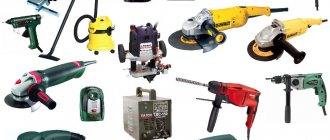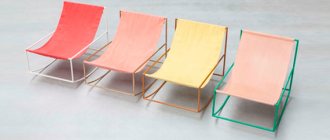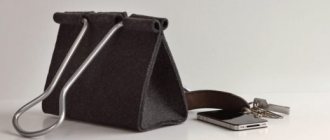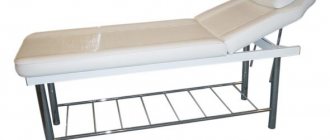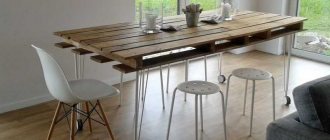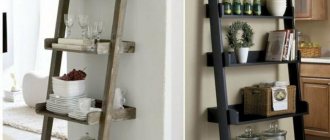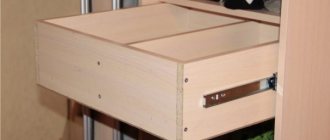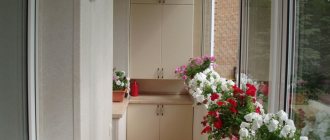Varieties
Shelves perform a variety of functions, which is why there are so many varieties of them.
In particular, there are wall-mounted, suspended and corner structures. Wall-mounted ones are attached to the wall above a sofa, bed or table. Perhaps this is the most common type of shelves. Hanging shelves are attached to the ceiling using cables, belts or chains. Often such models are used for interior decoration in the living room, bedroom or kitchen. Corner models find their “shelter” at the junction of two walls. They are attached either to the walls or to the ceiling. Corner models are also actively used in the interiors of different rooms.
Shelves in a niche are a good alternative to a bulky closet.
Taking into account the shape of the shelves, their appearance, the structures are divided as follows:
- By shape, color and size;
- According to surface texture: matte, glossy, textured;
- By belonging to a certain style;
- By functionality (additional use of stands, lights, etc.).
Well, depending on the configuration, shelf models differ in the following indicators:
- The presence or absence of side walls in the structure;
- Horizontal or vertical position relative to the wall;
- Multi-tiered models or sliding to the side;
- The presence of right angles or, conversely, rounded outlines.
This is an excellent decorative solution that can be used in any room.
Shelves can be made of different materials. The most popular are:
- Natural solid wood;
- Metal;
- Glass (colored, frosted, transparent);
- MDF;
- chipboard;
- Plastic;
- Combined models (made from two or more different materials).
A niche in the wall plays the role of a beautiful and convenient addition to the interior of the apartment.
How to make shelves in a niche with your own hands: choosing material and technology
Hi all! Quite often in apartments and houses you can find niches in different rooms. They are found in the bathroom, often along with sewer pipes, in the kitchen and hallway, less often in the living room and bedroom. And if you make shelves in a niche, this will maximize its practicality.
Agree that simply covering an existing niche, or leaving it without shelves, storing all things only on the lower edge, is an extremely irrational way to use this interior element.
Yes, a niche is a kind of recess in the wall. Therefore, the shelves will be built-in and not protrude beyond the walls of the toilet, bathroom, living room or other room.
The only question is how to make a shelf and what material to choose from.
Features of location in different rooms
Undoubtedly, every owner is free to follow exclusively his own preferences when decorating the interior of any room. But there are some simple rules for placing shelves, thanks to which you can hide the weaknesses and highlight the advantages of the room and interior.
From a large niche you can make a closet for things or place shelves for books there.
Living room
The choice of shelves for the living room interior is no less important than the choice of furniture, lighting system and decorative elements. In modern interiors, minimalism increasingly prevails: bulky walls are a thing of the past, they have been replaced by light, almost airy, modular structures. Such shelves combine the seemingly incongruous: without weighing down the space, they are able to provide enough space to accommodate all the necessary things. And the room, at the same time, remains practically free of furniture.
A small shallow niche can be well decorated with decorative elements or narrow shelves for various souvenirs and other beautiful trinkets.
Before purchasing shelves for the living room, decide on their function:
- Often in the living room, shelves are hung above the seating area (above the sofa) or above the TV. In the first case, this will be an excellent opportunity to place a library, and in the second, to place photo frames, souvenirs or small vases on the shelf.
- If your living room has a niche, consider it a bonus. Proper equipment of this space with the help of lighting will make the room unusual and interesting. In addition, a niche is a great way to save space.
- If you consider yourself a lover of all kinds of flora, place shelves near the window and place flowers on them.
- When placing shelves on the wall, stick to a checkerboard pattern. In this case, the interior will turn out to be very original. The main thing is that the models you choose are not bulky. And it is better to give preference to light designs.
If in your case the living room is combined with a bedroom, then the shelf can serve as a partition. Moreover, she can handle the role of both a “blind” wall and a through wall.
Kitchen
Shelves in the kitchen are needed both to solve very specific practical problems and as decoration. Most often, shelves for kitchen utensils, necessary appliances and dishes for everyday use are equipped with doors, which allows you to protect these items from dust and dirt. But the following is on display for everyone to see:
- Cookbooks;
- Sets of spices in beautiful jars (both convenient and beautiful to see);
- Vases with fruit (or sweets);
- Decorative tableware (dishes, plates, jugs, samovars);
- Small frames with paintings or photos.
In the niche you can place shelves for dishes, place jars with spices or flowerpots with flowers.
All this decorative splendor should not be placed on the wall where the work area is located, especially if the kitchen is small. Place eye-catching decorative items on the opposite side. By the way, in this way you will also ensure their safety.
It is also better to place corner and suspended structures on the side opposite the working area.
Shelves with lighting and souvenirs look very appropriate in the kitchen.
Bedroom
This truly sacred place needs an interior thought out to the smallest detail. Especially if the owner (or hostess) of the premises is a person with claims to maximum comfort and style.
Flowers, scented candles, books, or just beautiful dim lighting will wonderfully complement the bedroom interior.
Most often, wall shelves are chosen to decorate a bedroom. In the sleeping space, pots of flowers, souvenirs, photo frames, figurines, candlesticks or books are placed on such shelves. As a rule, in the rest room, shelves do not carry a multifunctional load; they serve exclusively for placing little things dear to the heart. Wardrobes and space in the sofa (bed) are used to place clothes or other things.
If you make shelves, you can create a cozy corner with family photos and books.
To keep the necessary items at arm's length, shelves are often placed above the head of the bed. In order for the design to look like a single whole, the color scheme and shape are chosen in accordance with the design of the bed itself and the bedside tables.
Children's room
You can't do without shelves in a nursery. Moreover, the design and location directly depend on the age of the child.
While the baby is just getting acquainted with the world around him, it is important to choose models with rounded edges to eliminate the possibility of injury. Toys, construction sets and educational games will be stored on the shelves. The shelves themselves for the little ones are made in the shape of clouds or flowers.
The most popular furniture for a children's room is shelves and racks.
As the child grows up, shelves of a more laconic configuration are chosen, because textbooks and other school supplies will “live” on them. At this age, it will be more convenient for the child if the shelves are hung above the desk. The ideal solution would be wall or corner models.
Well, in order to create a feeling of a single design concept, choose shelves that match the style of other interior items: wall and ceiling decoration, a sofa (or bed), as well as chairs or bedside tables, if any.
The upper shelves in the niche can be used for some things that the baby does not need on a daily basis.
Cabinet
This is one of the most specific rooms in any apartment. Its design depends on the direction of professional activity and the preferences of the owner of the office. In addition, the interior will have to be modified if the office is combined with a bedroom or living room.
Shelves have long ceased to be just storage space. They have become stylish, interesting, designer.
Documents, writing utensils, and other small items are put away in the table. Shelves in an office most often serve a purely decorative function, so photo frames, souvenirs, spectacular candlesticks and books in unusual bindings are placed on floor or wall-mounted structures.
Bathroom
For reliable and convenient fastening of shelves in the bathroom, special hooks and brackets are used. And the shelves are chosen either in a straight or angular configuration.
It is very important to choose the right material from which bathroom models are made, because they will be used in conditions of high humidity. Most often, preference is given to glass, MDF with a water-repellent coating, and stainless metal.
Tubes with bath products, scented candles, bath salts, decorative shells - these things, placed on niche shelves, will decorate the room in the best way.
In addition to shelves, the bathroom must have systems for drying towels, as well as places for storing cleaning supplies.
Wardrobe
If you are lucky enough to have an entire room as a dressing room, carefully consider the storage system. In this space, functionality comes first, with beauty, style and uniqueness coming second.
Shelves, holders and other dressing room contents can have different designs.
Shelves should be comfortable, practical and exactly the right size for your things and shoes. The design does not matter: floor, wall, corner or straight - the main thing is that they provide you with comfort of use and safety of things.
Mounting options
There are many factors to consider when installing shelves. The material from which the product is made and the expected load matter. The simplest method is open installation, which is visible to the naked eye. Let's consider implementation options.
Corners. Can withstand a load of 20-40 kg depending on the design features. The simplest and most common mount.
In some cases, you don’t want to spoil the overall appearance with fasteners. Then the use of hidden installation becomes relevant. It is convenient to mount shelves in narrow niches in this way, where unnecessary parts take up space. Various types of hidden fastenings are used.
Rods. Metal studs are placed on one side inside the shelf and on the other side on the wall.
Wooden bars. This mount is a kind of frame on which the shelf is placed.
Hidden loops. They are mounted at the end of the shelf and secured with self-tapping screws. The product is hung on screws in the walls.
How to create a niche
In many layouts you can find a niche. Someone considers this a flaw in the room and begins to rack their brains: how to decorate it. According to professional designers, a niche is a bonus for apartment owners. After all, with its help you can not only create a unique interior of its kind, but also add functionality to the room, especially if the apartment is small. So what to do with a niche? One option: place a sofa or bed in a niche.
An intimate niche made of plasterboard and a bed in it is an ideal solution for a small room.
The room does not always have openings in the wall, so if you wish, you can make partitions from plasterboard. The main thing is to use every centimeter of space; you can equip shelves around the sofa and place books or souvenirs on them.
Even if the niche is very small and you won’t be able to equip a full-fledged sleeping place, still, build a small sofa. For this you will need a mattress and a couple of pillows.
Since the space in the niche will be darker than in the main room, take care of additional lighting.
If it so happens that there is a window in the niche, even the smallest one, believe me, you are very lucky. Although additional lighting will still have to be done, you are guaranteed an unusual, cozy atmosphere.
Shelves in a niche
To be fair, it is worth noting that owners of square meters with niches prefer to equip them with a storage system. This decision is considered more correct and closer to the realities of life. How to make shelves in a niche with your own hands?
Shelves can be made of wood, plywood, veneered chipboard, covered with stain or painted.
In fact, the simple classic design is extremely easy to make. Especially since you don't have to create the sides. Buy a board from a hardware store, then cut it into pieces of the size you need. Sand the resulting wooden shelves well. This can be done either with sandpaper or with a sander. After this, coat the boards with a primer and then paint or varnish.
To install shelves in place, holders or small brackets are most often attached to the end parts of the niche.
Niches are an ideal location for built-in shelves and shelving as the walls of the niche provide the support required, especially for heavy loads.
If you want to make the shelves closed, and the desired model requires the presence of doors, then it is better to turn to specialists, since without certain skills it is difficult to cope with such a design.
Choosing a style
It would seem that a shelf is the simplest detail of the interior, however, in order for the overall appearance to be decent, it is important that the shelves are consistent with a specific stylistic solution.
- Classic. This style is characterized by the use of natural materials. Therefore, it is better if the shelves are made of natural wood. The structures can be attached to the wall, or located in a niche (if there is one).
The color scheme should either echo the general palette, or, conversely, become a bright accent in the interior.
When choosing a shape, give preference to conventional rectangular designs. Carvings can be used as decoration. - Modern. For modern design solutions in this style, closed glazed wall models are best suited. Matte or transparent shelves with multi-colored inserts or lighting complement the interior well.
Thanks to such decorative tricks, the interior turns out to be unique and very cozy. - Provence. French country style is perfectly complemented by wooden structures. Just paint the shelf in light colors and age it slightly.
Shelves are important for any room. With their help, the functionality of the space not only increases, it becomes more comfortable and stylish. And proper design of the existing niche will make the room unique in its own way, regardless of what you place in it: shelves or a sofa.
Types of niche shelves and their location
A niche in a home is a useful space that can be used for decorative or practical purposes. So, you can place shelves inside and put things on them or arrange decorations. Shelves should be selected depending on the interior features of the room.
A niche in an apartment can be located anywhere. Some people do not use the space in it, but in vain. You can place a lot of things inside. Niche shelves can be divided into categories depending on their type and material.
Wall-mounted. Attached to the wall, they are universal and standard.
It is also important to consider the material. It is usually selected in the same style as the overall interior of the room. The specifics of care depend on this. There are several material options.
Tree. A good solution for many interior areas. Wooden shelves look attractive and stylish. Sometimes, to reduce the cost, they use not solid wood, but chipboard or MDF.
50 design options for shelves in a niche in the interior
How to do it yourself?
The easiest way to make a shelf yourself is from wood, chipboard or MDF, or plasterboard. First you need to purchase a sheet of material of suitable thickness. Additionally, you can use decorative film to change the appearance of the product. Step-by-step instruction:
determine the size of the niche to mark the shelves on the sheet of material;
draw out a sheet of MDF and cut out the blanks with a jigsaw;
in some cases, the cut areas must be cleaned with sandpaper;
if necessary, cover with decorative film.
If you work with wood, you can create an antique effect. To do this you will need a gas torch, sandpaper and varnish.
First you should singe the wood, then smooth out the roughness. At the end, the product is varnished.
Fastenings are selected based on the expected loads. General rules apply here. If you have the necessary tools, you can make glass shelves yourself. The principle of operation is the same, but you don’t have to overwrite the cuts. However, glass requires more care; it may crack during cutting.
To learn how to make a niche with shelves, see the following video.
Source
Plasterboard shelves: types of designs
It is easy to cut and install, allowing you to build a variety of design structures. This is especially true if the room does not have the usual rectangular shape. Looks beautiful with backlighting .
The configuration of the shelves can be linear or curly, subject to the general style of the interior of a particular room.
- The size and number of shelves can be determined independently, taking into account the dimensions of existing equipment.
- You can install sockets and lighting.
- There is no need to waste time searching for a suitable furniture wall or slide, which may be more expensive than the construction materials.
Prominent load-bearing columns, ventilation and heating pipes, walls with steps spoil the appearance and cause difficulties with the arrangement of furniture. All this can be hidden under drywall. And so that the usable area is not lost, install niches or shelves. Drywall allows you to build structures of various shapes. The shelves themselves can have any shape (even asymmetrical and tilted).
Everything is limited by the space of the room and the designer’s imagination. GCR is often used to create built-in cabinets and walls. This allows you to build a structure that will replace the furniture wall.
